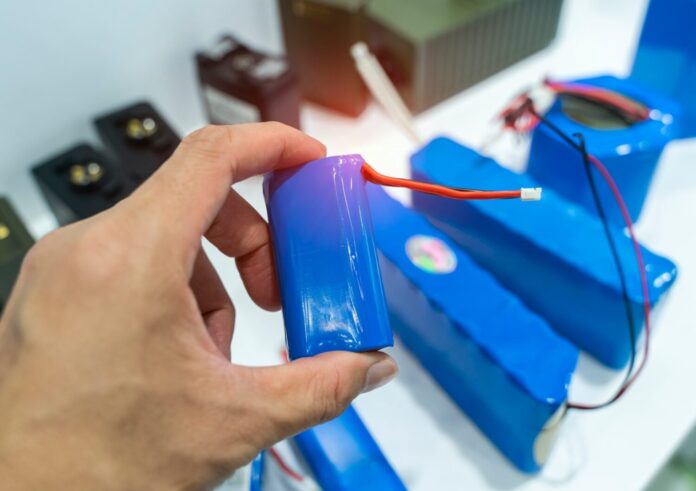Conducting a capacity test on a lithium battery is a critical process for determining its health and efficiency. This comprehensive guide will provide you with step-by-step instructions and tips to accurately measure the capacity of your lithium battery, ensuring you can rely on its performance for your specific needs. Understanding the capacity of a lithium battery is crucial for various applications, from small electronic devices to larger applications like electric vehicles. The test’s accuracy is vital for assessing the battery’s health, predicting its lifespan, and ensuring it meets safety standards.
Understanding Capacity Testing
Capacity testing of lithium batteries is a process used to determine how much charge a battery can hold and deliver. This testing is essential for anyone who wants to gauge the health of their battery, understand its lifespan, and ensure its safe operation. It’s particularly important in contexts where battery performance is critical, such as in renewable energy systems, electric vehicles, or portable electronic devices. By understanding the capacity of a lithium battery, users can make informed decisions about battery maintenance, usage, and eventual replacement. Learn more at Bell.

Preparing for the Test
The first step in conducting a capacity test is to prepare the lithium battery and the testing environment. This preparation is crucial for ensuring the safety and accuracy of the test. Check the battery for any physical damage or defects, and make sure it’s at room temperature, as extreme temperatures can affect the test results. It’s also important to use reliable equipment, including a charger and a discharger, as these will play a crucial role in the testing process. Proper preparation sets the stage for a successful capacity test.
Charging the Battery
The next step is to fully charge the lithium battery. This step is important because it standardizes the starting point of the test, ensuring that all tests begin with the battery at its maximum capacity. It’s important to monitor the charging process carefully to prevent overheating, which can damage the battery and affect the accuracy of the test results. A fully charged battery is essential for a reliable capacity test.
Setting Up the Test
To conduct the capacity test, you’ll need to set up your testing equipment. This involves connecting the lithium battery to a device that will discharge it at a constant rate. This setup simulates real-world conditions and ensures that the test is as accurate as possible. It’s crucial to select a discharge rate that matches the battery’s specifications to avoid damaging the battery and to ensure the results reflect its actual performance under typical usage conditions.

Performing the Discharge Test
The discharge test is the core of the capacity testing process. During this test, the battery is discharged at a predetermined rate until it reaches its cut-off voltage, the point at which it’s considered to be ’empty.’ The time it takes for the battery to discharge fully is a key piece of data, as it’s used to calculate the battery’s capacity. This test should be monitored carefully to ensure that it proceeds as planned and to gather accurate data.
Calculating the Capacity
Calculating the battery’s capacity is a straightforward process. By multiplying the discharge rate (in amperes) by the time it took for the battery to reach its cut-off voltage, you can determine the battery’s capacity in ampere-hours (Ah). This measurement is a practical indicator of how much energy the battery can store and deliver, and it allows you to compare the battery’s performance to its stated specifications. Understanding the battery’s capacity helps you assess its health and efficiency.
Interpreting the Results
Once you have calculated the battery’s capacity, you can interpret the results by comparing them to the battery’s rated capacity. A significant deviation from the rated capacity indicates that the battery may be worn or damaged. By conducting capacity tests regularly, you can track the battery’s performance over time and identify any patterns of degradation. This information is crucial for planning maintenance or replacement and for understanding the long-term performance of the battery.

Factors Affecting Accuracy
Several factors can impact the accuracy of a capacity test. These include the ambient temperature, as batteries perform differently under different temperatures, and the consistency of the load applied during the discharge test. It’s also important to use accurate and calibrated measuring equipment to ensure that the data you collect is reliable. By controlling these factors, you can improve the accuracy of your capacity tests and gain a clearer understanding of your battery’s performance.
Maintaining Safety
Safety is paramount when handling lithium batteries, especially during capacity testing. Lithium batteries can be hazardous if they are damaged or mismanaged. Always conduct tests in a well-ventilated area, use appropriate protective equipment, and have procedures in place to deal with any emergencies that may arise. By prioritizing safety, you can conduct capacity tests without putting yourself or others at risk.
Long-Term Benefits of Capacity Testing
The long-term benefits of regularly conducting capacity tests on lithium batteries cannot be overstated. By routinely assessing battery health, users can preemptively identify potential issues, schedule maintenance, and plan for replacements before failures occur. This proactive approach minimizes downtime and maximizes efficiency, particularly in critical applications where battery reliability is paramount. Furthermore, capacity testing data contributes to a deeper understanding of battery aging and wear patterns, informing better design and manufacturing practices for future battery technologies.

End Note
Conducting a capacity test on a lithium battery is an essential practice for anyone who relies on these batteries for their energy needs. Accurate capacity testing helps you understand the health and efficiency of your battery, enabling you to make informed decisions about its use and maintenance. Regular testing and careful analysis are key to optimizing the performance of lithium batteries and planning for their eventual replacement.





![Calgary’s Hottest Neighborhoods for Luxury Homebuyers [2024]](https://thewashingtonote.com/wp-content/uploads/2024/04/Calgary-324x160.png)



